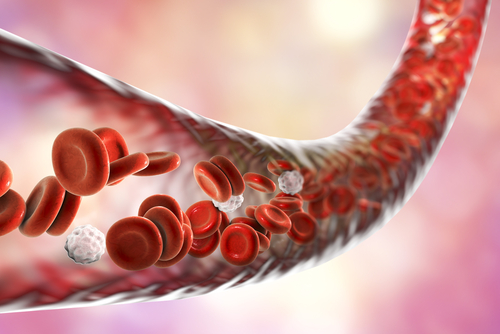Off-label Imbruvica Helped Ease CAD Symptoms, Preliminary Study Shows
Written by |

Off-label treatment with Imbruvica (ibrutinib), a lymphoma and leukemia therapy, can reduce the anemia and peripheral symptoms of cold agglutinin disease (CAD), a preliminary study has found.
The study, “Effective Treatment of Cold Agglutinin Disease/Cold Agglutinin Syndrome with Ibrutinib: An International Case Series,” was presented at the 62nd American Society of Hematology (ASH) Annual Meeting and Exposition, held virtually Dec. 5–8.
CAD, also known as cold agglutinin mediated autoimmune hemolytic anemia (cAIHA), is a rare autoimmune disorder in which exposure to cold temperatures causes autoantibodies to bind and prematurely destroy red blood cells (hemolysis).
Among other symptoms, the rupturing of red blood cells results in anemia and in the discoloration of extremities due to poor circulation, a condition called acrocyanosis.
A standard treatment for CAD patients experiencing severe anemia or acrocyanosis is rituximab, which targets the cells of the immune system responsible for producing antibodies. About half of patients respond to this treatment, but responses usually last less than one year. While rituximab combination treatments have longer response durations, they also carry a risk of long-term adverse side effects.
Also, treatments that suppress the complement system, a portion of the immune system that is overactive in CAD, have shown promise for reducing hemolysis but not peripheral symptoms like acrocyanosis.
International guidelines released earlier this year recommend the off-label use of Imbruvica for CAD patients unresponsive to other conventional treatments. Imbruvica belongs to a class of medications called Bruton’s tyrosine kinase (BTK) inhibitors, and induces the death of antibody-producing cells.
An international team of researchers now set out to evaluate the effectiveness of Imbruvica as a treatment for anemia, hemolysis, and acrocyanosis in CAD patients.
The retrospective study included 10 patients, most of whom had CAD secondary to another blood disorder, at five centers in Italy, Norway, the U.S., and the U.K. Patients were ages 55–81 and were followed from April 2014 to June 2020, with a median follow-up duration of 20 months.
Except for one patient who received Imbruvica for treating leukemia, all other individuals received the treatment for CAD. Also, all but two had received a different medication prior to Imbruvica, and the median number of prior treatments was two.
At the time of treatment initiation, all patients had anemia, seven required regular blood transfusions, and seven had acrocyanosis.
Imbruvica treatment resulted in increased levels of hemoglobin (the protein that transports oxygen in red blood cells) in all patients, with a median increase of 4.4 g/dL. Levels of lactate dehydrogenase and bilirubin, both markers of hemolysis, also decreased in nine of the 10 patients.
Notably, all patients who required regular transfusions achieved transfusion-independence, including two who did so within the first month. Also, all seven patients with acrocyanosis improved, and five had their symptoms completely resolved. No serious side effects were observed.
While the study is ongoing, these preliminary data suggest that Imbruvica and other BTK-inhibitors may be effective for treating CAD.





